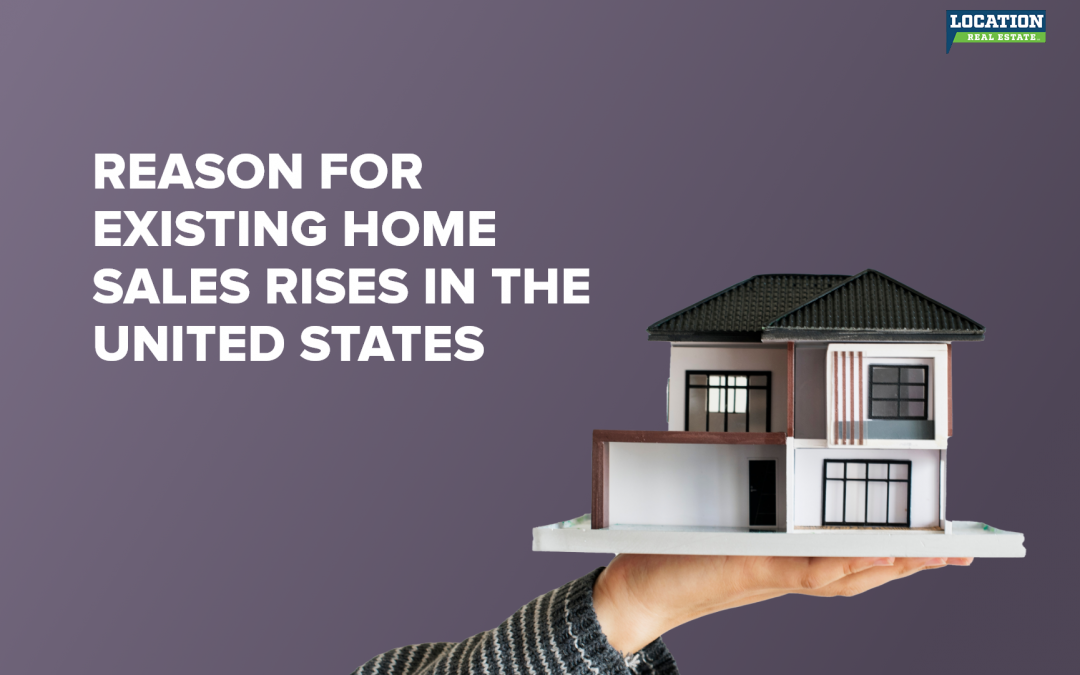Existing-home sales rise to a new high in the US, unlike in the past 14 years. In September alone, the sales of previously owned homes climbed as high as 9.4%. This existing-home sales rise has bolstered the economy.
Heightened by a general fear of missing out (FOMO) as Jacob Passy puts in his article, titled Existing-home sales rise on the month as some buyers are motivated by FOMO, existing-home sales have jumped up by 7% between August and September.
According to Market Watch, the threat of rising mortgage rates pushed buyers to lock in deals whenever a window of opportunity opened. In comparison to the previous year, sales have risen by 2.3% in 2021.
If you are looking to close in on some great deals in the Lincoln area, we can help you. We have the list of some of the best houses for sale in Lincoln.
So, let us find out more on what happened exactly, leading to a rise in the sales of existing homes in the US.
Rising inventory
The previous months have experienced an increase in the inventory, which led to the increase in home sales in September. However, according to the Chief Economist for the National Association of Realtors, this excitement brought about by the extra inventory didn’t last long.
Between August and September, mortgage loans took a toll on the housing inventory, pulling it down by 0.8%, which was down by 13% in 2020. By the end of September, unsold inventory was calculated to be at a 2.4-month supply.
A 6-month supply indicates a balanced market. According to experts, more homes would become available on the market as early as 2022, with homebuilders ramping up production and mortgage forbearance programs coming to an end. However, the supply-chain material issues would continue to be a challenge in 2022.
Every state in the US experienced an increase in sales; on a regional basis, the South led the show by an 8.6% increase in sales. The median price of an existing home has jumped as high as $353,800, up by 13% from 2020.
Rising interest rates
The rising interest rates could push buyers to close a deal as quickly as they can.
In the coming months, most housing economists expect to see home sales to return to a more typical pace. However, mortgage rates could serve as an impetus for buyers to make their move and purchase an existing home at the earliest.
As the Fed starts tapering, the Chief US Economist, Rubeela Farooqi predicts that increasing mortgage rates will push some buyers to the edge, who will make purchases ahead of a rise in prices.
Higher prices could lead to the fear of missing out (FOMO).
In the past year, there was a sudden surge in the home-sales activity, as the pandemic and quarantines gave way to people frantically searching for housing solutions, triggered by a growing need for social distancing. Remote-working options also drove these increasing house sales.
However, according to the Manager of Economic Research at realtor.com, the pace of sales is quite moderate now. These record price hikes have generated a FOMO in the millennials, who are frantically searching for houses now (these are the groups of people who had pushed back home-buying as part of the future agenda).
Despite the mortgage rates experiencing a drift, they remain at a considerably low.
Uncertainty in the face of the pandemic
There has been a robust demand for existing houses, followed by a shortage of homes for sale, which makes the housing market to be one of the brightest spots for the US economy.
According to an analysis by Chief Economist, the housing market potential climbs up by 10% year on year.
If we look at the figures, the housing market potential experienced a boost in August by 0.05% since July. In comparison with August 2020, the market potential for existing-home sales went up by about 10%.
The economy has been greatly affected by the outburst of the COVID-19 pandemic. This was greatly reflected in August’s labor market data, last year. The market recovery was stalled as the pandemic stopped workers from re-entering the workforce.
As the rising tensions of COVID-19 and the growing infection rates weighed on consumers’ outlook for the economy, consumer confidence went down to a six-month low. However, the good news is that increased economic uncertainty is not as bad as one might consider it.
One of the downsides of increased economic uncertainty is the tightening of credit conditions. With increasing lending standards, the number of people qualifying for mortgage loans would be fewer. This could dampen first-home buyer demand and also this would force some homeowners to stay where they are now as they are ineligible for loans.
Closing thoughts
While there is a downward pressure on mortgage rates, an increased economic uncertainty would undermine consumer confidence, resulting in tighter credits. This means the housing market is having a complicated relationship with the COVID-19 pandemic.
Real estate experts are positive and expect a rise in the sales of existing homes over time.
If you are looking for houses for sale in Lincoln, call us today.
Ours is a Lincoln-based real estate agency that will help you to find your dream home in Lincoln.

